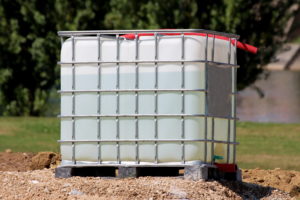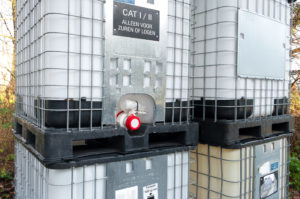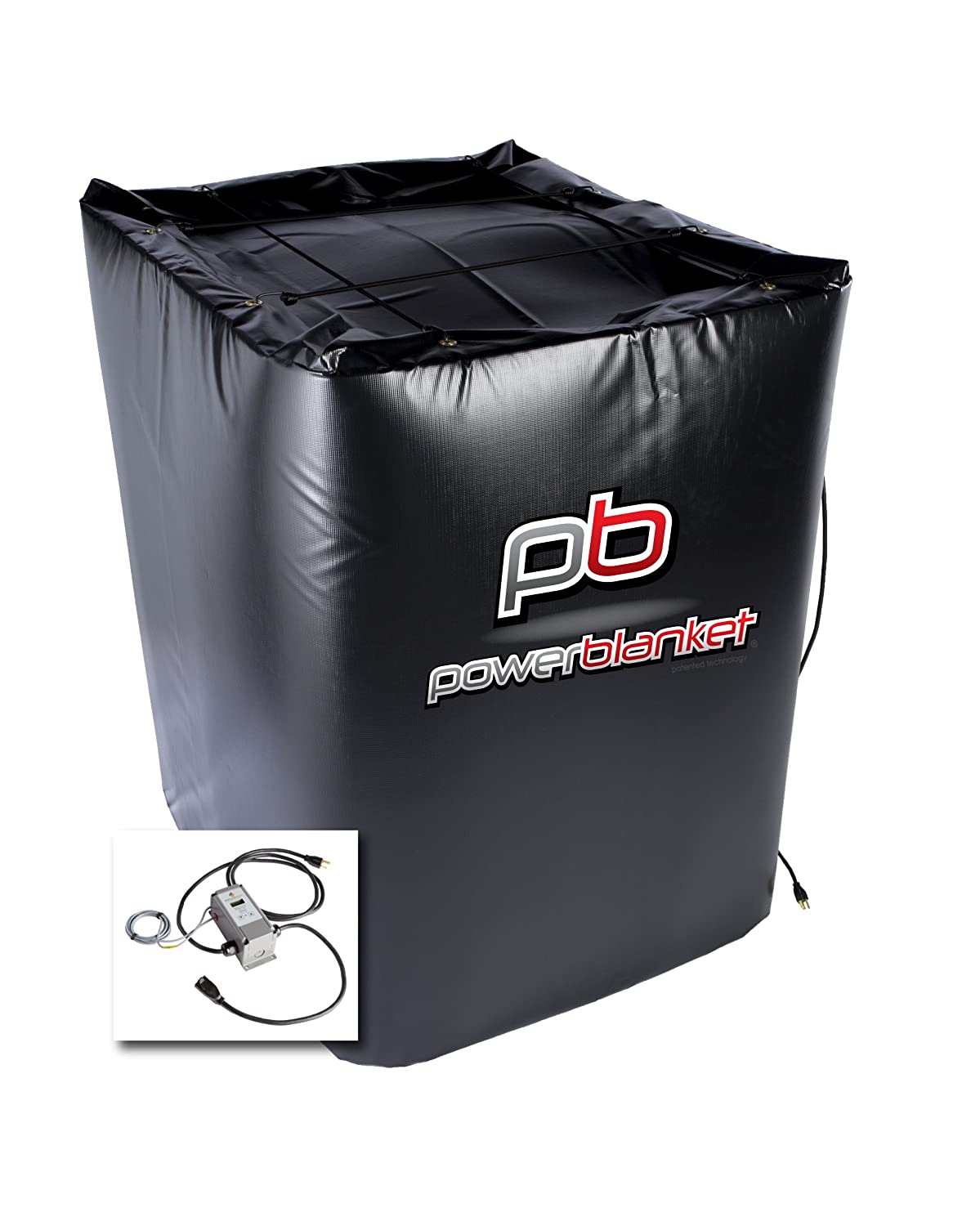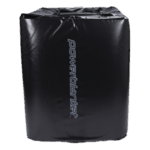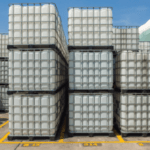IBC Tote Operation Safety
What are IBC totes, and why are they essential in the process heating industry?
IBC totes, or intermediate bulk containers, are large, reusable containers that transport and store liquids, powders, and granulated materials. They are typically made of plastic or metal and come in various sizes and capacities. IBC tanks are essential in many industries because they provide a convenient and efficient way to transport and store bulk cargo. They are also durable, reusable, and cost-effective compared to other storage and transportation options.
IBC tanks can be equipped with heating and cooling elements, making them ideal for process heating applications where temperature control is crucial, for example, Powerblanket tote heaters. With their versatility and reliability, IBC tanks play a critical role in many industries, from production to transportation and storage.
An Overview of Venting IBC Totes
This article comprehensively overviews the importance of venting a tank in the process heating industry. We will answer the question, when should IBC totes be vented? We intend to educate professionals on the dangers of overpressure and vacuum conditions in IBCs and why it is essential to vent them safely and efficiently. We will cover the different factors that impact the need to vent IBC totes, the ideal time for venting, and the proper procedure for venting IBC’s.
We will provide guidelines and tips for safe operation to ensure that professionals are well-equipped to handle this important task. We aim to provide valuable information and best practices for the safe operation of IBC’s with a vent.
What are IBC Totes?
IBC Tote Construction & Purpose
They are typically made of high-density polyethylene (HDPE) or metal and come in various sizes and capacities, ranging from 120 to 550 gallons. Stainless steel IBCs , composite IBCs, and plastic IBCs are designed to be highly durable and withstand the rigors of transportation and storage.
IBC Bags: The construction of IBC bags consists of a rigid outer container that provides structural stability and an inner bag that holds the material being stored or transported. The outer container is made of HDPE or metal and is often stackable for easy storage. The inner bag is typically made of food-grade liner material, such as polyethylene, that can hold food-grade products. A metal cage holds the inner bag in place, providing additional support and stability.
Rigid IBC’s: For example, a stainless steel IBC, carbon steel, or an HDPE IBC. They must pass a stacking test load to be sure that each IBC tank can handle the ability to be stacked and remain properly secure on top of or beneath another. These rigid tanks can handle high loads of products within and, even when filled, can be moved with a pallet jack or forklift with ease.
The purpose of these tanks is to provide a convenient and efficient way to transport and store large volumes of materials. They are often used in chemicals, food, beverages, pharmaceuticals, etc. The use of IBC totes allows for easy and efficient transportation of materials. Also, it reduces the risk of spills and contamination, as the lid and cap are designed to hold the product securely within. IBC totes can be equipped with heating and cooling elements, which allows many different industries to improve their processes and systems and run more efficiently.
Importance of Venting IBC Totes
The dangers of overpressure and vacuum conditions
These totes and tanks are commonly used to store and transport a wide range of liquids and gases, but overpressure and vacuum conditions can pose significant dangers when these containers are used. Overpressure can occur due to temp changes or a buildup of pressure within the IBC, leading to the potential for the container to rupture or burst. Vacuum conditions can also be a concern, mainly when liquids are being transported. A sudden reduction in pressure can cause the IBC to collapse, damaging the container and potentially releasing its cargo into the environment. You must also be aware of a need to vent when using products like IBC tote covers or heating blankets.
Both overpressure and vacuum conditions can cause serious harm to people, equipment, and the environment, making it essential to monitor and control pressure within IBC’s to ensure safe and responsible use.
Venting totes to ensure safe operation
Venting IBCs is an important aspect of ensuring safe operation. The purpose of venting is to regulate the pressure within the container, preventing overpressure or vacuum conditions from occurring. By providing a means of releasing pressure buildup, venting helps to prevent damage to the IBC, its contents, and its surroundings.
It is important to vent IBC totes appropriately, using the correct size and type of vent and ensuring that it is positioned correctly. Regular monitoring of pressure levels and proper maintenance of venting systems is also essential to ensure the safe operation of IBC totes. The proper use of a vent will help to minimize the risk of dangerous incidents, protect people, equipment, and the environment, and ensure the safe and responsible use of these containers.
When to Vent IBCs
The need to vent IBC totes is impacted by several factors, such as temperature changes, atmospheric pressure, and the flow rate of the contents within the tote. Venting helps to regulate the pressure inside the tote and prevent damage or leakage. The ideal time for venting IBC totes is when the pressure inside the tote has increased significantly due to changes or product movement. To determine when to vent the tote, it is recommended to use a pressure gauge or monitor pressure changes regularly, especially during temp fluctuations. Additionally, it is important to follow the manufacturer’s instructions and safety protocols when venting IBC totes to ensure safe and efficient operations.
Instructions for Safe Operation
The proper procedure for venting IBC totes involves several important steps to ensure safety and prevent damage to the tote and its contents.
Firstly, it is important to wear personal protective equipment, such as gloves and safety glasses, to prevent exposure to the tote’s contents.
Next, the tote should be placed on a level surface, and the pressure relief valve should be opened slowly to release any excess pressure. It is important to release the pressure gradually to prevent sudden spikes in pressure that could cause damage to the tote or injury to those nearby.
Once the pressure has been successfully relieved, the vents should be closed securely. It is also important to regularly check and maintain the vent and gasket to ensure it is functioning properly.
Finally, recording the IBC venting activity in a log book is recommended to track the pressure changes and ensure compliance with regulations and industry standards.
Summary of the importance of venting IBC totes
In summary, venting IBC totes is crucial if your industry needs to apply heating or cooling to a tank, as it helps regulate the pressure inside the tote and prevent damage or leakage. The pressure inside the tote can increase due to a myriad of changes around the tank. Without proper venting, this excess pressure can cause the tote to fail or leak, potentially harming employees and the environment.
Regulations and industry standards require regular venting of an IBC to maintain safety and ensure compliance. Proper venting procedures should be followed, including wearing personal protective equipment, opening the pressure relief valve slowly, checking and maintaining the valve, vent, and gasket, and recording the venting activity in a log book. Overall, venting IBC totes is an essential step in the process heating industry to maintain safety and prevent damage.
Follow these standards to ensure the safe and efficient operation of IBC totes.
Frequently Asked Questions
Can you pressurize an IBC tote?
No, most plastic IBC totes are not designed to be pressure vessels and should not be pressurized, as this can lead to dangerous overpressure conditions.
Are IBC totes airtight?
Yes, IBC totes are generally engineered to be airtight, using gaskets and O-ring seals at the lid and drain valve to prevent contamination and maintain cargo quality.
What size is the valve on an IBC tote?
The valve on an IBC tote typically features a 2" Camlock male fitting with a 2 1/8" BSP thread, though sizes can vary based on specific models and manufacturers.
What is the lifespan of an IBC tote?
With proper care and ideal conditions, IBC totes can last 5 years or longer, but regular maintenance and inspection are crucial to maximize their service life.
Keep your temperature-sensitive materials at the right temperature with Powerblanket IBC tote warmers and heaters.


